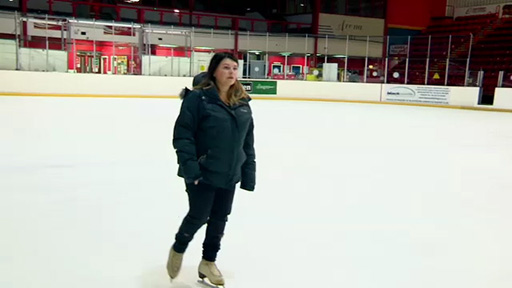1 Coaching child athletes
In the following video, you will interpret communication in a particular environment: ice skating. This illustrates the challenges of working with child athletes, with a view towards possible selection to a national squad.
Activity 1 Child athletes, coaches and the high performance manager
This video features excerpts from a BBC documentary that follows young child athletes Lily, 11, and Genevieve, 12, as they pursued their dreams of becoming competitive figure skaters, and provides some of the background context alongside short coaching interactions. The first excerpt features Lily and the second features Genevieve. In the third excerpt, Robin Cousins, GB Ice Skating High Performance Manager, observes and talks to Genevieve.
While watching the three clips make notes on examples of effective communication in relation to the following:
- how feedback is delivered including use of any non-verbal communication
- evidence of communication that supports the coach-athlete relationship.

Transcript
Discussion
In excerpt 1, Lily’s coach Catherine Hudson uses positive language to frame her feedback; for example. ‘I really liked how you … ’. She also tried to explain why they were doing a practice at speed, which perhaps affects how the message is received. It was noticeable how she made use of positive visual modelling to show a movement: ‘Finish it and grow [arms aloft demonstration] … that’s it’. In the limited glimpses we see of them together, there is some evidence of a trusting and respectful relationship between them.
In excerpt 2, Genevieve’s mother has a direct approach to communication, which both mother and daughter admit to being complicated by the dual coach/mother relationship. Her mother shows some sympathy at the difficulties this can cause. You might have noticed the possible influence of cultural differences in the strict training approach between expectations of British parenting and her mother’s heritage in Bulgarian gymnastics.
In excerpt 3, we see Robin Cousins with Genevieve. He uses visual demonstration of her hand position that is then corrected. At one point when he is talking to her, his crossed arms and straight posture explicitly convey his authority as head of the Olympic programme. In his feedback to her, he encourages her to be less tentative and perform to the crowd. It is unclear how this message is received by Genevieve. He shows his high expectations for her by standing above her and saying with pointing gestures, ‘… you better make sure it’s a performance you want to talk about since we’ll be talking about you’. He ends this with a high five and then looks away. To us as an onlooker, this appears to be signalling that there is additional pressure for Genevieve at her forthcoming championship and that the conversation is finished.
This is a high performance environment in which isolated conversations, when removed from the coaching context, can seem harsh and out of place. However, in this situation the fact that 10 and 11 year olds are involved makes the balance between instruction, challenge and supportive communication even more delicate. After all, children often find it difficult to offer their opinions to adults, due to the age gap and resultant power imbalance.

